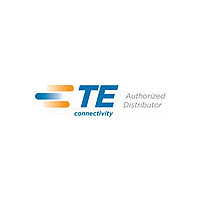TP3-FUEL-0.250 TE Connectivity, TP3-FUEL-0.250 Datasheet - Page 2

TP3-FUEL-0.250
Manufacturer Part Number
TP3-FUEL-0.250
Description
LABEL IDENTIFICATION TAPE
Manufacturer
TE Connectivity
Type
Labelr
Series
TP3-Taper
Datasheet
1.TP-FUEL-0.625.pdf
(16 pages)
Specifications of TP3-FUEL-0.250
Label Type
Die-Cut
Color
Red
Lead Free Status / RoHS Status
Lead free / RoHS Compliant
Label Size
-
For Use With/related Products
Thermal Transfer Printer
Other names
701580-000
9-1198161-3
9-1198161-3
Catalog 1654227
Revised 04-07
www.tycoelectronics.com
RFID (Radio Frequency Identification) is a technology that
promises to revolutionize the way in which the products move
across the supply chain all the way from the manufacturer to the
consumer. With the ability to collect and distribute information
without human intervention along the supply pipeline, RFID is in
an enviable position to create collaborative interlinks between
suppliers, manufacturers, movers and customers thus improving
efficiencies, accuracy, speed to market and quality and hence
reducing true costs and total cost of ownership for everyone
along the way.
What is RFID
RFID is a technology that utilizes radio waves at certain
frequencies to communicate data through the IT structure to the
various business processes in an organization. It is a business
approach to obtain information about products accurately, fast,
efficiently and in real time so the business processes can function
in a balanced mode with minimum investment or working capital,
thus maximizing enterprise profitability. A basic system includes
an RFID tag, a printer/encoder, an interrogator reader and anten-
na, software to read/write on the tag and connectivity to a cus-
tomer defined box that runs the enterprise/site level applications
to manage the motion of the parts/SKUs/assets.
RFID tag:
An RFID tag consists of a specific RFID chip bonded using thermal
contacts to an etched or printed antenna on to a plastic film. This
‘inlay’ is then laminated to/embedded into an application specif-
ic/customer defined polymer film or form factor. The chip in the
tag carries a ‘license plate’ of the product it is applied to while the
antenna allows for the chip to be interrogated/written to using an
encoder or interrogator/reader.
Printer/Encoder:
A printer/encoder is a thermal transfer (or any other print technol-
ogy) printer with an RF module that allows for the printer to simul-
taneously encode the RFID chip while printing readable/scan-able
information on the tag surface. It typically has a near field capabili-
ty such that only one tag is read/encoded to at once but can run
at over 6 inches/sec to print/encode multiple tags in a sequence.
Interrogator/reader and Antenna:
An RFID reader and antenna set is the heart of the RFID system.
When strategically placed along critical read points in a manufac-
turing or distribution center location, it interrogates multiple RFID
tags at the same time and sends the information over to the
ERP/MRP systems to take suitable action, whether it’s invoicing,
cross docking, placing an order, confirming a receipt or simply
inventory tracking. All these translate to real dollars for the busi-
ness. These readers/antennae can be positioned on the dock
doors, on conveyor belts, on racks, in manufacturing cells, in
quality labs or can be hand-carried around just like the bar-code
scanners, depending upon the scale and scope of the RFID
implementation. Depending upon the type of tags and nature of
the environment, the readers can pick tag info from as far as 10
feet for passive (no power source) tags and 100 feet for active
(battery powered) tags.
Dimensions not italicized are
in millimeters while dimensions
in inches are italicized.
RFID
RFID (Radio Frequency Identification)
Dimensions are shown for
reference purposes only.
Specifications subject
to change.
Software/Connectivity platform:
Typically referred to as middleware and edgeware (for being the
buffer between the RFID hardware and the ERP/MRP/WMS
system), this system manages the RFID hardware for operation,
up-time and optimization. The system manages events and event
logging, communicates transactions and provides visual/audible
cues to the operating workforce. In addition, it filters the large
amount of data received from the hardware and converts to
usable information and then sends this information to the data-
base or specific fields in the customer’s system so business
transactions can be consummated. This is the most complex
piece in the RFID puzzle and utmost care should be taken to
partner with a corporation that has the stability and resources to
not only integrate the various pieces together but also to create a
platform that is both scaleable and extensible.
For additional information on RFID,
USA: 1-800-522-6752
Canada: 1-905-470-4425
Mexico: 01-800-733-8926
C. America: 52-55-5-729-0425
www.rfid.tycoelectronics.com
call 1-866-440-RFID (7343)
or visit
South America: 55-11-3611-1514
Hong Kong: 852-2735-1628
Japan: 81-44-844-8013
UK: 44-141-810-8967
165


















